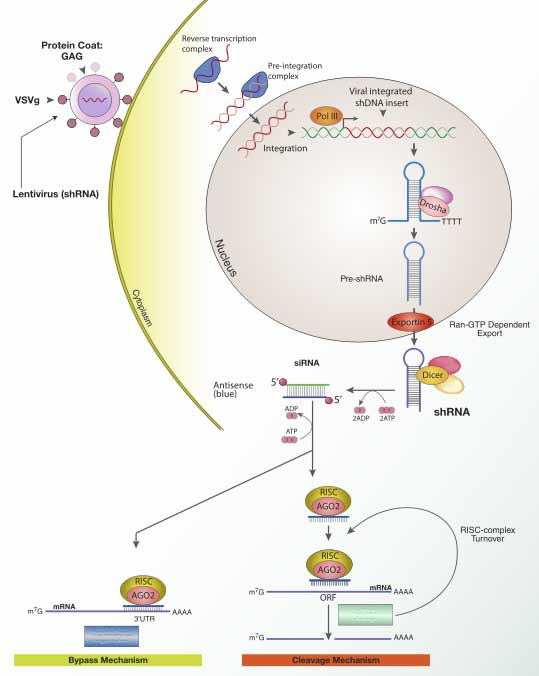A small hairpin RNA or short hairpin RNA (shRNA) is a sequence of RNA that makes a tight hairpin turn that can be used to silence gene expression via RNA interference. shRNA uses a vector introduced into cells and utilizes the U6 or H1 promoter to ensure that the shRNA is always expressed. This vector is usually passed on to daughter cells, allowing the gene silencing to be inherited. The shRNA hairpin structure is cleaved by the cellular machinery into siRNA, which is then bound to the RNA-induced silencing complex (RISC). This complex binds to and cleaves mRNAs which match the siRNA that is bound to it. shRNA is transcribed by RNA polymerase III. shRNA production in a mammalian cell can sometimes cause the cell to mount an interferon response as the cell seeks to defend itself from what it perceives as viral attack. This problem is not observed in miRNA, which is transcribed by RNA polymerase II (the same polymerase used to transcribe mRNA). shRNAs can also be made for use in plants and other systems, and are not necessarily driven by a U6 promoter. In plants the traditional promoter for strong consitutive expression (in most plant species) is the cauliflower mosaic virus 35S promoter (CaMV35S), in which case RNA Polymerase II is used to express the transcript destined to initiate RNAi. References * McIntyre G, Fanning G (2006). "Design and cloning strategies for constructing shRNA expression vectors". BMC Biotechnol. 6: 1. doi:10.1186/1472-6750-6-1. PMID 16396676. PMC 1343552. http://www.pubmedcentral.gov/articlerender.fcgi?tool=pmcentrez&artid=1343552.
Lentiviral Delivery of designed shRNA's and the mechanism of RNA interference in mammalian cells. (*) Retrieved from "http://en.wikipedia.org/"
|

